Top 10 Best Temples in the World
The Top Ten
1 Borobudur, Central Java, Indonesia
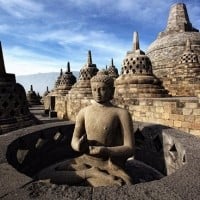 Borobudur, located in Central Java, Indonesia, is a magnificent Buddhist temple known for its intricate lattice structure comprising multiple stacked platforms. The monument dates back to the 9th century and is adorned with 2,672 relief panels and hundreds of Buddha statues. Renowned for its grandeur and complexity, Borobudur is the world's largest Buddhist temple and a UNESCO World Heritage site.
Borobudur, located in Central Java, Indonesia, is a magnificent Buddhist temple known for its intricate lattice structure comprising multiple stacked platforms. The monument dates back to the 9th century and is adorned with 2,672 relief panels and hundreds of Buddha statues. Renowned for its grandeur and complexity, Borobudur is the world's largest Buddhist temple and a UNESCO World Heritage site.
 Borobudur, located in Central Java, Indonesia, is a magnificent Buddhist temple known for its intricate lattice structure comprising multiple stacked platforms. The monument dates back to the 9th century and is adorned with 2,672 relief panels and hundreds of Buddha statues. Renowned for its grandeur and complexity, Borobudur is the world's largest Buddhist temple and a UNESCO World Heritage site.
Borobudur, located in Central Java, Indonesia, is a magnificent Buddhist temple known for its intricate lattice structure comprising multiple stacked platforms. The monument dates back to the 9th century and is adorned with 2,672 relief panels and hundreds of Buddha statues. Renowned for its grandeur and complexity, Borobudur is the world's largest Buddhist temple and a UNESCO World Heritage site.
2 Wat Rong Khun, Chiang Rai, Thailand
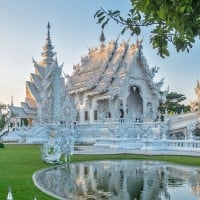 Wat Rong Khun, more commonly known as the White Temple, is a contemporary, unconventional Buddhist temple in Chiang Rai, Thailand. Designed by Thai artist Chalermchai Kositpipat, the temple was opened to visitors in 1997. Its unique design, rich in symbolic detail, features white color with pieces of glass in the plaster, sparkling in the sun, representing Buddha's purity and wisdom.
Wat Rong Khun, more commonly known as the White Temple, is a contemporary, unconventional Buddhist temple in Chiang Rai, Thailand. Designed by Thai artist Chalermchai Kositpipat, the temple was opened to visitors in 1997. Its unique design, rich in symbolic detail, features white color with pieces of glass in the plaster, sparkling in the sun, representing Buddha's purity and wisdom.
 Wat Rong Khun, more commonly known as the White Temple, is a contemporary, unconventional Buddhist temple in Chiang Rai, Thailand. Designed by Thai artist Chalermchai Kositpipat, the temple was opened to visitors in 1997. Its unique design, rich in symbolic detail, features white color with pieces of glass in the plaster, sparkling in the sun, representing Buddha's purity and wisdom.
Wat Rong Khun, more commonly known as the White Temple, is a contemporary, unconventional Buddhist temple in Chiang Rai, Thailand. Designed by Thai artist Chalermchai Kositpipat, the temple was opened to visitors in 1997. Its unique design, rich in symbolic detail, features white color with pieces of glass in the plaster, sparkling in the sun, representing Buddha's purity and wisdom.
3 Angkor Wat, Siem Reap, Cambodia
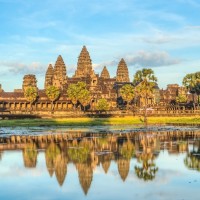 Angkor Wat in Siem Reap, Cambodia, is a breathtaking Hindu temple complex, originally constructed in the early 12th century. It is the largest religious monument in the world and features a classical style of Khmer architecture. Originally dedicated to Vishnu, it was transformed into a Buddhist temple towards the end of the 12th century.
Angkor Wat in Siem Reap, Cambodia, is a breathtaking Hindu temple complex, originally constructed in the early 12th century. It is the largest religious monument in the world and features a classical style of Khmer architecture. Originally dedicated to Vishnu, it was transformed into a Buddhist temple towards the end of the 12th century.
 Angkor Wat in Siem Reap, Cambodia, is a breathtaking Hindu temple complex, originally constructed in the early 12th century. It is the largest religious monument in the world and features a classical style of Khmer architecture. Originally dedicated to Vishnu, it was transformed into a Buddhist temple towards the end of the 12th century.
Angkor Wat in Siem Reap, Cambodia, is a breathtaking Hindu temple complex, originally constructed in the early 12th century. It is the largest religious monument in the world and features a classical style of Khmer architecture. Originally dedicated to Vishnu, it was transformed into a Buddhist temple towards the end of the 12th century.
4 Temple of Heaven, Beijing, China
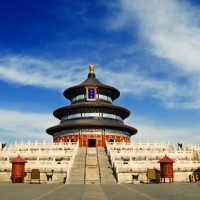 The Temple of Heaven, situated in Beijing, China, is an imperial complex of religious buildings symbolizing the relationship between earth and heaven. Constructed in the 15th century during the Ming Dynasty, it was where emperors of the Ming and Qing dynasties conducted annual ceremonies of prayer for good harvests. The temple is noted for its precise architectural proportions and symbolic layout.
The Temple of Heaven, situated in Beijing, China, is an imperial complex of religious buildings symbolizing the relationship between earth and heaven. Constructed in the 15th century during the Ming Dynasty, it was where emperors of the Ming and Qing dynasties conducted annual ceremonies of prayer for good harvests. The temple is noted for its precise architectural proportions and symbolic layout.
 The Temple of Heaven, situated in Beijing, China, is an imperial complex of religious buildings symbolizing the relationship between earth and heaven. Constructed in the 15th century during the Ming Dynasty, it was where emperors of the Ming and Qing dynasties conducted annual ceremonies of prayer for good harvests. The temple is noted for its precise architectural proportions and symbolic layout.
The Temple of Heaven, situated in Beijing, China, is an imperial complex of religious buildings symbolizing the relationship between earth and heaven. Constructed in the 15th century during the Ming Dynasty, it was where emperors of the Ming and Qing dynasties conducted annual ceremonies of prayer for good harvests. The temple is noted for its precise architectural proportions and symbolic layout.
5 Prambanan Temple, Central Java, Indonesia
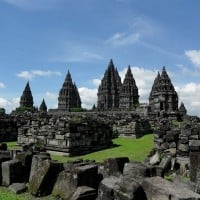 Prambanan Temple, located in Central Java, Indonesia, is a striking example of Hindu temple architecture. Built in the 9th century, it is dedicated to the Trimurti, the expression of God as the Creator (Brahma), the Preserver (Vishnu), and the Destroyer (Shiva). This UNESCO World Heritage site is the largest Hindu temple site in Indonesia and one of the biggest in Southeast Asia.
Prambanan Temple, located in Central Java, Indonesia, is a striking example of Hindu temple architecture. Built in the 9th century, it is dedicated to the Trimurti, the expression of God as the Creator (Brahma), the Preserver (Vishnu), and the Destroyer (Shiva). This UNESCO World Heritage site is the largest Hindu temple site in Indonesia and one of the biggest in Southeast Asia.
 Prambanan Temple, located in Central Java, Indonesia, is a striking example of Hindu temple architecture. Built in the 9th century, it is dedicated to the Trimurti, the expression of God as the Creator (Brahma), the Preserver (Vishnu), and the Destroyer (Shiva). This UNESCO World Heritage site is the largest Hindu temple site in Indonesia and one of the biggest in Southeast Asia.
Prambanan Temple, located in Central Java, Indonesia, is a striking example of Hindu temple architecture. Built in the 9th century, it is dedicated to the Trimurti, the expression of God as the Creator (Brahma), the Preserver (Vishnu), and the Destroyer (Shiva). This UNESCO World Heritage site is the largest Hindu temple site in Indonesia and one of the biggest in Southeast Asia.
6 Wat Phra Kaew, Bangkok, Thailand
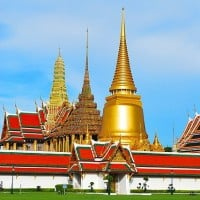 Wat Phra Kaew, or the Temple of the Emerald Buddha, situated within the Grand Palace in Bangkok, Thailand, is one of the most important Buddhist temples in Thailand. Built in the 18th century, it houses the highly revered Emerald Buddha statue, intricately carved from a single block of jade. The temple's architecture is marked by its ornate design and use of bright colors and golden elements.
Wat Phra Kaew, or the Temple of the Emerald Buddha, situated within the Grand Palace in Bangkok, Thailand, is one of the most important Buddhist temples in Thailand. Built in the 18th century, it houses the highly revered Emerald Buddha statue, intricately carved from a single block of jade. The temple's architecture is marked by its ornate design and use of bright colors and golden elements.
 Wat Phra Kaew, or the Temple of the Emerald Buddha, situated within the Grand Palace in Bangkok, Thailand, is one of the most important Buddhist temples in Thailand. Built in the 18th century, it houses the highly revered Emerald Buddha statue, intricately carved from a single block of jade. The temple's architecture is marked by its ornate design and use of bright colors and golden elements.
Wat Phra Kaew, or the Temple of the Emerald Buddha, situated within the Grand Palace in Bangkok, Thailand, is one of the most important Buddhist temples in Thailand. Built in the 18th century, it houses the highly revered Emerald Buddha statue, intricately carved from a single block of jade. The temple's architecture is marked by its ornate design and use of bright colors and golden elements.
7 Todai-ji, Nara, Japan
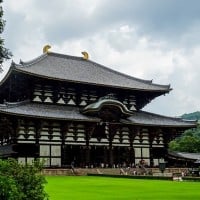 Todai-ji, located in Nara, Japan, is a historically significant Buddhist temple, known for housing the world's largest bronze statue of the Buddha Vairocana. Constructed in the 8th century, it also serves as the Japanese headquarters of the Kegon school of Buddhism. The Daibutsuden (Great Buddha Hall) is noted as the world's largest wooden building, despite being rebuilt in 1692 at a reduced size.
Todai-ji, located in Nara, Japan, is a historically significant Buddhist temple, known for housing the world's largest bronze statue of the Buddha Vairocana. Constructed in the 8th century, it also serves as the Japanese headquarters of the Kegon school of Buddhism. The Daibutsuden (Great Buddha Hall) is noted as the world's largest wooden building, despite being rebuilt in 1692 at a reduced size.
 Todai-ji, located in Nara, Japan, is a historically significant Buddhist temple, known for housing the world's largest bronze statue of the Buddha Vairocana. Constructed in the 8th century, it also serves as the Japanese headquarters of the Kegon school of Buddhism. The Daibutsuden (Great Buddha Hall) is noted as the world's largest wooden building, despite being rebuilt in 1692 at a reduced size.
Todai-ji, located in Nara, Japan, is a historically significant Buddhist temple, known for housing the world's largest bronze statue of the Buddha Vairocana. Constructed in the 8th century, it also serves as the Japanese headquarters of the Kegon school of Buddhism. The Daibutsuden (Great Buddha Hall) is noted as the world's largest wooden building, despite being rebuilt in 1692 at a reduced size.
8 Abu Simbel, Aswan Governorate, Egypt
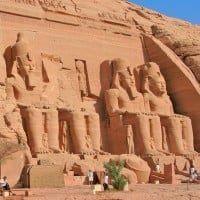 Abu Simbel, in the Aswan Governorate, Egypt, is an ancient temple complex originally carved out of the mountainside during the reign of Pharaoh Ramesses II in the 13th century BCE. This archaeological site comprises two temples: the Great Temple of Ramesses II and the smaller Temple of Hathor. Remarkably, the entire complex was relocated in the 1960s to avoid being submerged during the creation of Lake Nasser.
Abu Simbel, in the Aswan Governorate, Egypt, is an ancient temple complex originally carved out of the mountainside during the reign of Pharaoh Ramesses II in the 13th century BCE. This archaeological site comprises two temples: the Great Temple of Ramesses II and the smaller Temple of Hathor. Remarkably, the entire complex was relocated in the 1960s to avoid being submerged during the creation of Lake Nasser.
 Abu Simbel, in the Aswan Governorate, Egypt, is an ancient temple complex originally carved out of the mountainside during the reign of Pharaoh Ramesses II in the 13th century BCE. This archaeological site comprises two temples: the Great Temple of Ramesses II and the smaller Temple of Hathor. Remarkably, the entire complex was relocated in the 1960s to avoid being submerged during the creation of Lake Nasser.
Abu Simbel, in the Aswan Governorate, Egypt, is an ancient temple complex originally carved out of the mountainside during the reign of Pharaoh Ramesses II in the 13th century BCE. This archaeological site comprises two temples: the Great Temple of Ramesses II and the smaller Temple of Hathor. Remarkably, the entire complex was relocated in the 1960s to avoid being submerged during the creation of Lake Nasser.
9 Bagan Temples, Bagan, Myanmar
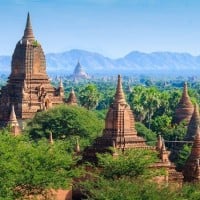 Bagan Temples, in Bagan, Myanmar, are part of an ancient city that dates back to the 9th century and was the capital of the Pagan Kingdom. The area contains over 2,000 Buddhist monuments towering over green plains, a testament to the religious devotion of the kingdom's rulers. The temples are famous for their varied sizes, styles, and decorative murals and stuccos.
Bagan Temples, in Bagan, Myanmar, are part of an ancient city that dates back to the 9th century and was the capital of the Pagan Kingdom. The area contains over 2,000 Buddhist monuments towering over green plains, a testament to the religious devotion of the kingdom's rulers. The temples are famous for their varied sizes, styles, and decorative murals and stuccos.
 Bagan Temples, in Bagan, Myanmar, are part of an ancient city that dates back to the 9th century and was the capital of the Pagan Kingdom. The area contains over 2,000 Buddhist monuments towering over green plains, a testament to the religious devotion of the kingdom's rulers. The temples are famous for their varied sizes, styles, and decorative murals and stuccos.
Bagan Temples, in Bagan, Myanmar, are part of an ancient city that dates back to the 9th century and was the capital of the Pagan Kingdom. The area contains over 2,000 Buddhist monuments towering over green plains, a testament to the religious devotion of the kingdom's rulers. The temples are famous for their varied sizes, styles, and decorative murals and stuccos.
10 The Potala Palace, Lhasa, Tibet, China
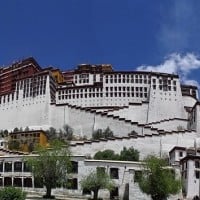 The Potala Palace, in Lhasa, Tibet, China, is an iconic structure that once served as the winter residence of the Dalai Lama. Built in the 17th century, it is a masterful example of Tibetan architecture. The palace, situated atop Marpo Ri hill, consists of over 1,000 rooms and is divided into the Red and White Palaces, symbolizing religious and administrative functions.
The Potala Palace, in Lhasa, Tibet, China, is an iconic structure that once served as the winter residence of the Dalai Lama. Built in the 17th century, it is a masterful example of Tibetan architecture. The palace, situated atop Marpo Ri hill, consists of over 1,000 rooms and is divided into the Red and White Palaces, symbolizing religious and administrative functions.
 The Potala Palace, in Lhasa, Tibet, China, is an iconic structure that once served as the winter residence of the Dalai Lama. Built in the 17th century, it is a masterful example of Tibetan architecture. The palace, situated atop Marpo Ri hill, consists of over 1,000 rooms and is divided into the Red and White Palaces, symbolizing religious and administrative functions.
The Potala Palace, in Lhasa, Tibet, China, is an iconic structure that once served as the winter residence of the Dalai Lama. Built in the 17th century, it is a masterful example of Tibetan architecture. The palace, situated atop Marpo Ri hill, consists of over 1,000 rooms and is divided into the Red and White Palaces, symbolizing religious and administrative functions.
The Contenders
11 Ranakpur Jain, Palin, India
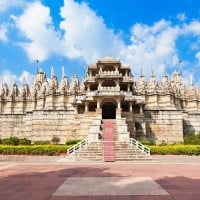

12 Lotus Temple, New Delhi, India
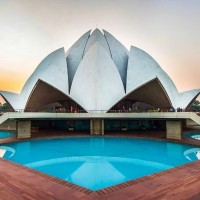

BAdd New Item